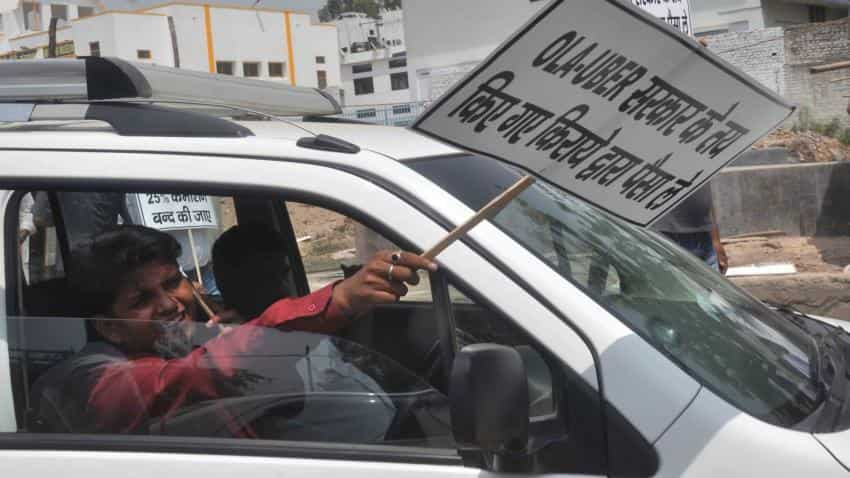Uber, Ola customer booking experience sees a decline in Q2 due to cab supply crunch
The cab supply crunch especially during the peak hours seems to be having a direct impact on the customer booking experience of cab players such as Uber and Ola.

Key highlights:
- Taxi-hailing cabs such as Uber and Ola have seen a fall in consumer booking experience in Q2
- Fall in consumer booking experience of online cab aggregators is due to the supply crunch
- Customer booking experience declined in Q2 2017, due to decline in availability of cabs during peak hours
The taxi-hailing cabs such as Uber and Ola have seen a fall in consumer booking experience in the second quarter of 2017. This fall in consumer booking experience of online cab aggregators is due to the supply crunch.
After two months of growth following a decline in cab booking experience in Q3 2016 due to the driver strikes, booking experience has once again seen a large dip due to cab supply shortages, according to a RedSeer Consulting report.
“Customer booking experience declined in Q2 2017, due to decline in availability of cabs during peak hours. With declining number of partner drivers, the players faced a supply crunch in peak hours,” said the report.
An earlier report by RedSeer also showed how online cab services seemed to be having a tough time in the country as driver supply continues to be a worry.
The registered cab supply in Q2 2017 has declined to nearly 3 lakh from nearly 5 lakh cabs in Q4 2016, it said.
This drop in cab network was as a result of drivers continuing to leave the online cab aggregator platforms because their demands were not met, it added. The cab drivers were choosing to leave as the cutting of incentives, commission rates and higher working hours that were not rolled back even after the cab drivers went on strike several times.
This comes as a disappointment to online cab players who had seen a rise from nearly 3 lakh in Q2 2016 to nearly 5 lakh in Q4 2016.
Taxi-hailing apps Uber and Ola seem to have made a comeback in the second quarter in 2017 after bookings declined for the first time in Q1 2017. The Indian online cabs market saw a growth of 15% in terms of ride count.
The ride count during Q2 2017, which was in April, May and June, increased to 156 million from 136 million in the previous quarter (Q1 2017), according to a RedSeer Consulting report.
While the online auto-rickshaw market has historically operated in stops and starts, the crippling driver strikes at the beginning of 2017 provided the right tipping point for this nascent category to evolve, according to a RedSeer Consulting report.
The total auto-rickshaw rides delivered by online players has increased by a massive 250% in Q3 2017, it said.
While the total auto-rickshaw rides by online players was 5.5 million in Q3 2016 it has grown significantly to 18.5 million in Q3 2017.
Car-pooling also seems to be growing at a fast pace in India as in Q2 2017 it witnessed a 22% growth in comparison with the previous quarter. Taxi-hailing app services such as Uber and Ola had introduced their car-pooling services such as UberPool and Ola Share in order to cater to large demand but low supply of cabs in large metros.
ALSO READ:
Get Latest Business News, Stock Market Updates and Videos; Check your tax outgo through Income Tax Calculator and save money through our Personal Finance coverage. Check Business Breaking News Live on Zee Business Twitter and Facebook. Subscribe on YouTube.
RECOMMENDED STORIES

Power of Compounding: How long it will take to build Rs 5 crore corpus with Rs 5,000, Rs 10,000 and Rs 15,000 monthly investments?

SBI 444-day FD vs PNB 400-day FD: Here's what general and senior citizens will get in maturity on Rs 3.5 lakh and 7 lakh investments in special FDs?

Looking for short term investment ideas? Analysts suggest buying these 2 stocks for potential gain; check targets

Rs 3,500 Monthly SIP for 35 years vs Rs 35,000 Monthly SIP for 16 Years: Which can give you higher corpus in long term? See calculations
11:32 AM IST










 Driver incentives of Uber, Ola in Q2 plummet as profitability remains key focus
Driver incentives of Uber, Ola in Q2 plummet as profitability remains key focus Travis Kalanick's move to reignite the power struggle in Uber backfires
Travis Kalanick's move to reignite the power struggle in Uber backfires Ola, Uber see growing demand for auto-rickshaws as cab supply declines
Ola, Uber see growing demand for auto-rickshaws as cab supply declines Cab supply of Uber, Ola drop as drivers continue to leave over unfulfilled demands
Cab supply of Uber, Ola drop as drivers continue to leave over unfulfilled demands Car-pooling service see growth in demand as Uber, Ola push for shared mobility
Car-pooling service see growth in demand as Uber, Ola push for shared mobility